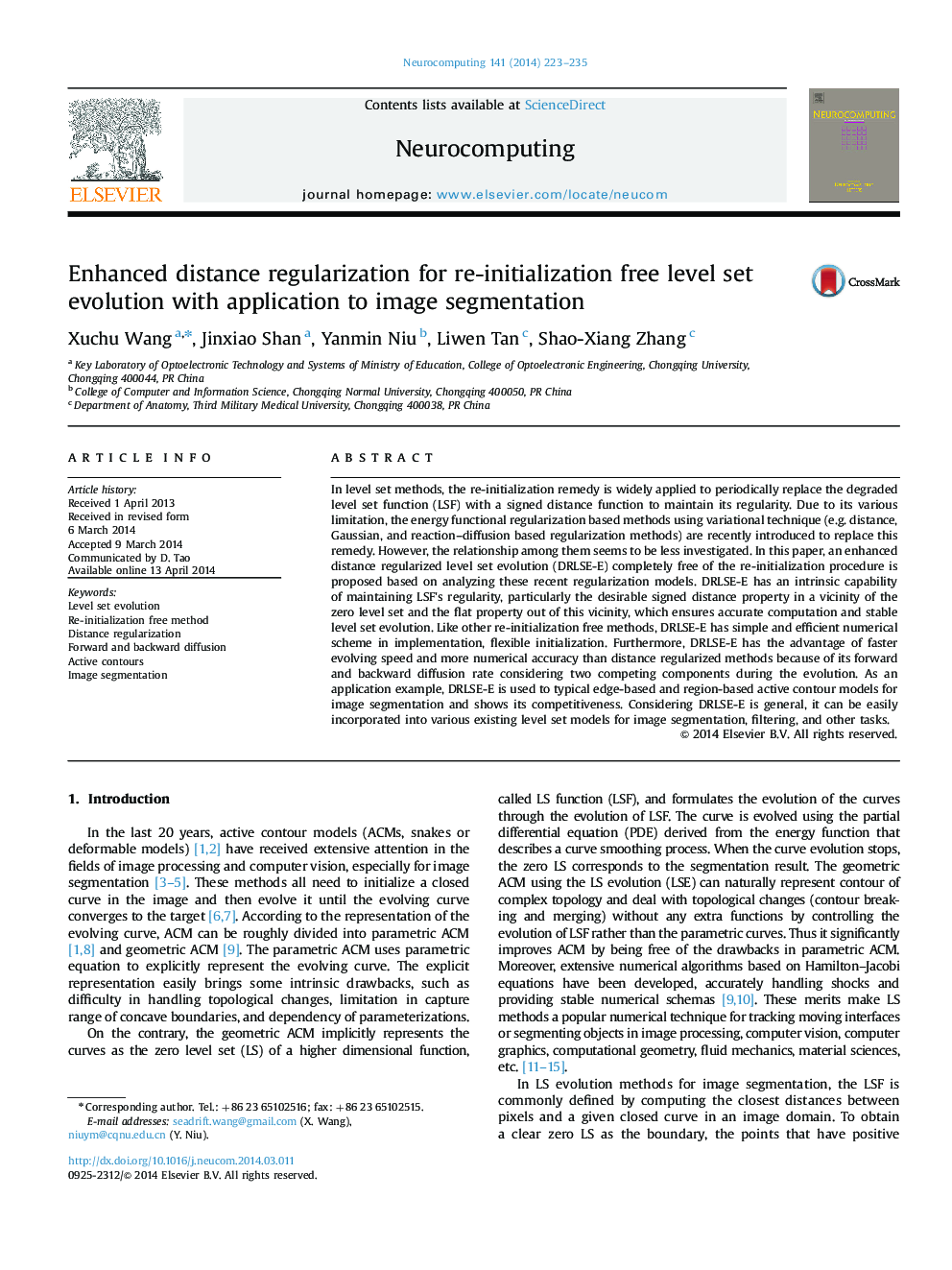| Article ID | Journal | Published Year | Pages | File Type |
|---|---|---|---|---|
| 406627 | Neurocomputing | 2014 | 13 Pages |
•We give a proposition in investigating four new re-initialization-free LSE methods.•We propose a DRLSE-E evolving fast and accurately due to its competing FAB diffusion.•We validate the advantages of DRLSE-E via several experiments.
In level set methods, the re-initialization remedy is widely applied to periodically replace the degraded level set function (LSF) with a signed distance function to maintain its regularity. Due to its various limitation, the energy functional regularization based methods using variational technique (e.g. distance, Gaussian, and reaction–diffusion based regularization methods) are recently introduced to replace this remedy. However, the relationship among them seems to be less investigated. In this paper, an enhanced distance regularized level set evolution (DRLSE-E) completely free of the re-initialization procedure is proposed based on analyzing these recent regularization models. DRLSE-E has an intrinsic capability of maintaining LSF׳s regularity, particularly the desirable signed distance property in a vicinity of the zero level set and the flat property out of this vicinity, which ensures accurate computation and stable level set evolution. Like other re-initialization free methods, DRLSE-E has simple and efficient numerical scheme in implementation, flexible initialization. Furthermore, DRLSE-E has the advantage of faster evolving speed and more numerical accuracy than distance regularized methods because of its forward and backward diffusion rate considering two competing components during the evolution. As an application example, DRLSE-E is used to typical edge-based and region-based active contour models for image segmentation and shows its competitiveness. Considering DRLSE-E is general, it can be easily incorporated into various existing level set models for image segmentation, filtering, and other tasks.
